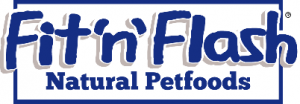Our Key Elements for Canine Health

Our Key Elements for Canine Health
No artificial colours, flavours or preservatives
Meat is the #1 ingredient – for high protein
Contains Fresh Meat & Fish – which very few brands include.
Omega 3 & 6 Fatty Acids
- For maintaining a shiny coat and healthy skin
- An optimum ratio of Omega-3 and Omega -6 fatty acids has been shown to keep skin cells and cell membranes plump and healthy, and to protect fur from excessive damage.
- Omega -3 fatty acids support healthy skin and coat
- Omega-6 fatty acids assist coat shine and texture
Probiotics and prebiotics
- Probiotics are live bacteria that are naturally found in your gut, supplements and some pet foods.
- Prebiotics are natural food sources for probiotic bacteria. A supply of good quality prebiotics will help to build and maintain healthy microflora.
- A natural fibre source not only works as a prebiotic it also helps to maintain a healthy rear gut and to assist to move digesta through the gut.
Vitamins and Chelated minerals
- Optimum nutrition and good digestive health in turn leads to overall health and wellbeing. Optimum nutrition provides the correct blend of essential nutrients including amino acids, fatty acids, vitamins and trace minerals, in a highly biologically available source. Fit’n’Flash provides a blend of organic trace minerals including copper, manganese, selenium and zinc to improve availability, digestion and absorption of these vital minerals.
- Organic minerals have an increased probability of absorption through the gut wall – by binding or chelating these essential minerals to a ligand such as an amino acid, sugar and other highly absorbtive value compounds, increases the likelihood of the mineral being absorbed across the gut wall into the body. It is not the nutritive value of the ligand that is important but rather its mechanism of making the mineral more biologically active than its inorganic counterpart.
- Organic bound minerals have a higher bioavailability to inorganic sources, so that more of the mineral is actually absorbed into the body ensuring that the dietary and metabolic requirements are being satisfied
- The trace minerals included are Sulphates ( versus Oxides) for higher digestibility. In general Sulphates have about double the bioavailability level of Oxides
Natural Antioxidants
- Antioxidants assist by bonding to free radicals which can harm the body and cause cell damage, if in excess. If the balance between antioxidants and free radicals is not corrected, the body can be exposed to oxidative stresses which can cause a number of disorders and diseases
- Free radicals are a normal metabolizable function and different antioxidants help to limit their effect on body function.
- When an imbalance of free radicals to antioxidants occurs, a state of oxidative stress can result.
- Support overall good health and support the immune system
- Natural antioxidants appear to be more beneficial than synthetic sources. Fruits and vegetables are known as good sources of natural antioxidants
- Types of antioxidants and their effect include:
- Beta-carotene – assist with eye health, precursor of Vitamin A. Vitamin A is vital for growth and development, cell recognition, vision, immune function, and reproduction and helps the heart, lungs, and kidneys. As an antioxidant it has been shown to support eye health.
- Xanthophylls, such as lutein and zeaxanthin – Both are members of the carotenoid family, lutein is found in green leafy vegetable such as spinach and kale and are also present in orange and yellow vegetables. It may assist with prostrate health and also have a role in healthy vision and eye protection
- Lycopene is a strong antioxidant that can protect the body against oxidative stress and offer some protection from certain environmental toxins and chronic diseases. It is also a member of the carotenoid family and is commonly identified as the pigment in red and pink vegetables.
- Selenium is not only an essential mineral it is also a powerful antioxidant that fights oxidative stress and helps defend the body from chronic conditions, such as heart disease and cancer. This has been attributed to selenium’s ability to reduce DNA damage and oxidative stress, boost the immune system, and may destroy cancer cells. Selenium works hand in hand with other antioxidants such as Vitamin E and Zinc.
- Vitamin C is also an important physiological antioxidant and has been shown to regenerate other antioxidants within the body, including alpha tocopherol (vitamin E). Ongoing research is examining whether vitamin C, by limiting the damaging effects of free radicals through its antioxidant activity, might help prevent or delay the development of certain cancers, cardiovascular disease, and other diseases in which oxidative stress plays a causal role.
- Vitamin E – the collective name for a group of fat-soluble compounds (tocopherols and tocotrienols) that have distinctive antioxidant activities. Vitamin E has a strong role in protecting fats and oils from oxidation. Vitamin E also plays an important role in supporting the immune system.
- Flavonids – naturally occurring antioxidants found in red fruits and vegetables such as cranberries. Flavonids provide a range of antioxidative support. They may have anti-inflammatory and antibacterial properties and may also assist in heart health.
- Antioxidants assist by bonding to free radicals which can harm the body and cause cell damage, if in excess. If the balance between antioxidants and free radicals is not corrected, the body can be exposed to oxidative stresses which can cause a number of disorders and diseases
Fibre
Natural fibre is present in Pumpkin, Pumpkin Seeds, Vegetables and Psyllium Husk Natural fibre sources can be broken down to Soluble and Insoluble fibre components
- Soluble fibre absorbs water from the digestive tract, to increase stool size and normalise transit time through the rear bowel
- Insoluble Fibre acts as prebiotic for healthy bacteria (volatile fatty acids), which improves colon health.
